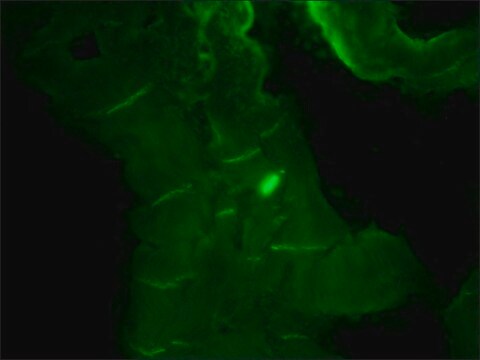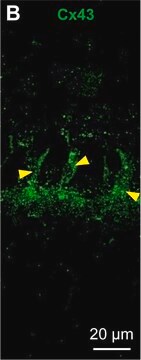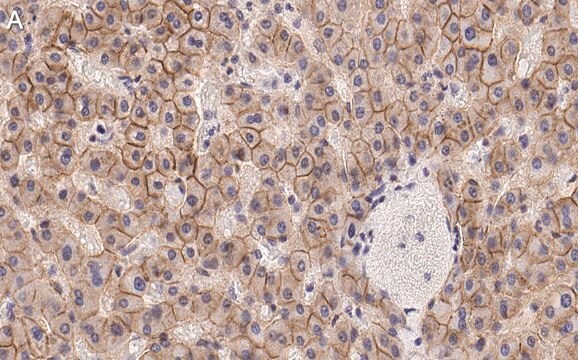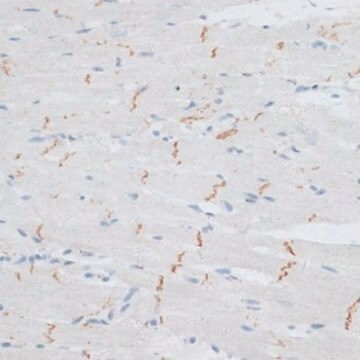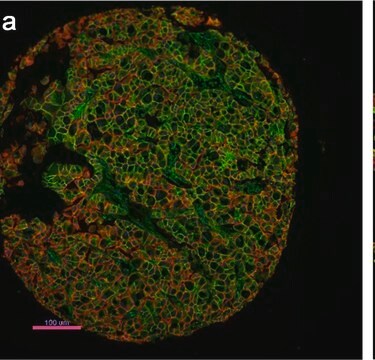C2542
Monoclonal Anti-N-Cadherin antibody produced in mouse
clone GC-4, ascites fluid
Sinonimo/i:
Anti-A-CAM, Anti-A-Cell Adhesion Molecule
About This Item
Prodotti consigliati
Origine biologica
mouse
Livello qualitativo
Coniugato
unconjugated
Forma dell’anticorpo
ascites fluid
Tipo di anticorpo
primary antibodies
Clone
GC-4, monoclonal
contiene
15 mM sodium azide
Reattività contro le specie
chicken, mouse, human, rabbit, rat
tecniche
electron microscopy: suitable
immunohistochemistry (frozen sections): 1:100 using chicken cardiac muscle
microarray: suitable
western blot: 1:100 using chicken or rat cardiac muscle
N° accesso UniProt
applicazioni
research pathology
Condizioni di spedizione
dry ice
Temperatura di conservazione
−20°C
modifica post-traduzionali bersaglio
unmodified
Informazioni sul gene
human ... CDH2(1000)
mouse ... Cdh2(12558)
rat ... Cdh2(83501)
Cerchi prodotti simili? Visita Guida al confronto tra prodotti
Categorie correlate
Descrizione generale
Specificità
Immunogeno
Applicazioni
Azioni biochim/fisiol
Stato fisico
Stoccaggio e stabilità
Esclusione di responsabilità
Non trovi il prodotto giusto?
Prova il nostro Motore di ricerca dei prodotti.
Raccomandato
Codice della classe di stoccaggio
10 - Combustible liquids
Classe di pericolosità dell'acqua (WGK)
nwg
Punto d’infiammabilità (°F)
Not applicable
Punto d’infiammabilità (°C)
Not applicable
Scegli una delle versioni più recenti:
Possiedi già questo prodotto?
I documenti relativi ai prodotti acquistati recentemente sono disponibili nell’Archivio dei documenti.
Il team dei nostri ricercatori vanta grande esperienza in tutte le aree della ricerca quali Life Science, scienza dei materiali, sintesi chimica, cromatografia, discipline analitiche, ecc..
Contatta l'Assistenza Tecnica.